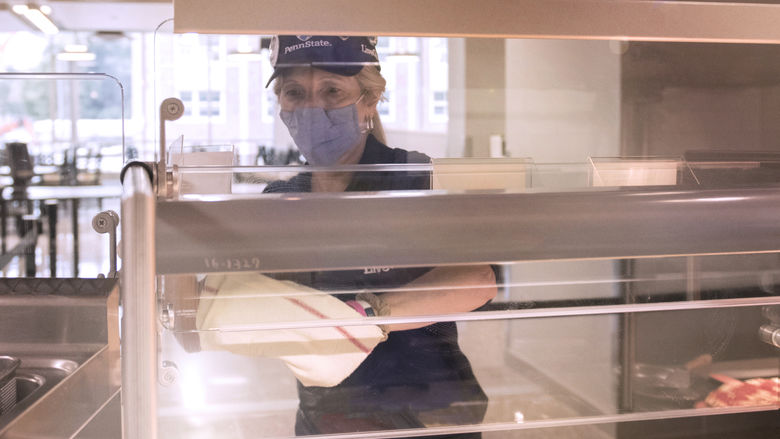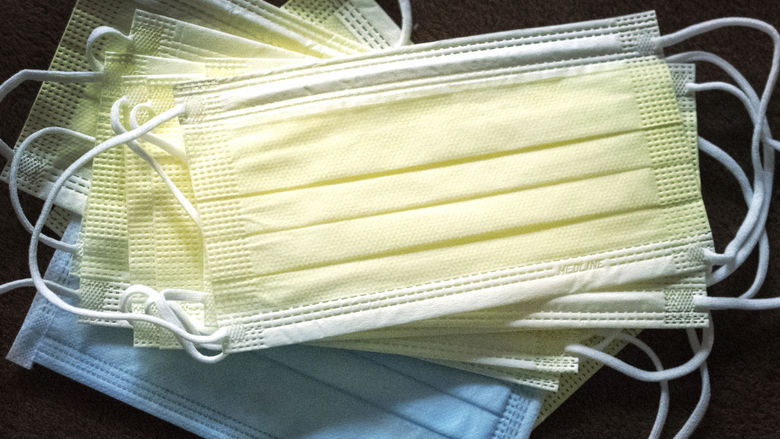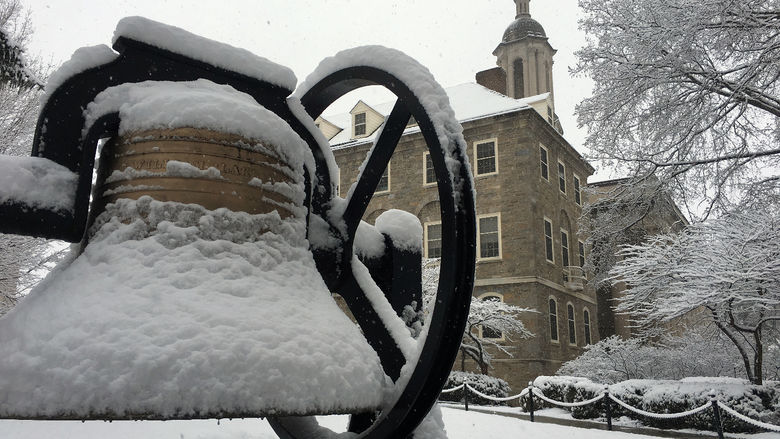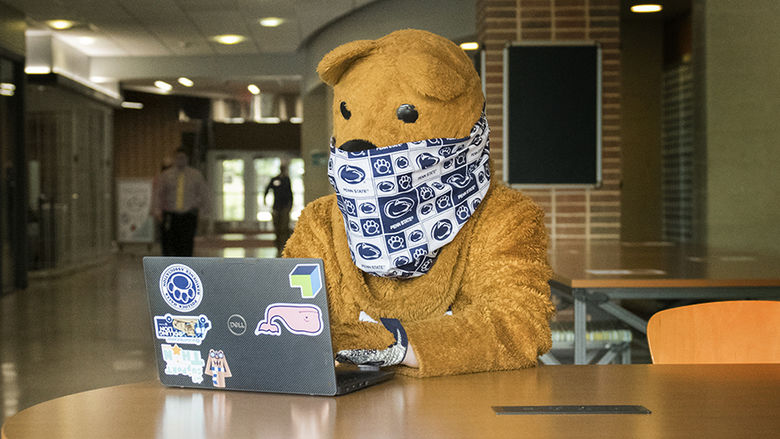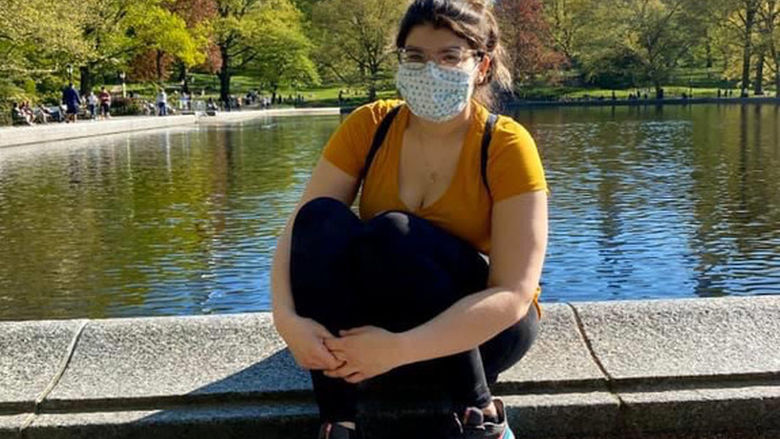UNIVERSITY PARK, Pa. — Following a three-month comprehensive planning process, Penn State officials have determined that the University can meet or exceed the Pennsylvania Department of Education’s guidelines for colleges and universities, and look forward to welcoming back faculty, staff and students to resume on-campus, in-person classes and other activities this fall in a limited fashion.
More than 250 faculty, staff and administrators comprised 16 task groups appointed to develop Penn State’s Back to State plans, guided by faculty scientific and public health experts. Considering the views expressed in survey results and other feedback from students and employees, the groups’ overarching goal has been to develop a plan to continue the research and educational mission of the University while providing for the physical and psychological health and well-being of students, faculty and staff. This includes the direct impacts of COVID-19 as well as the indirect consequences of mitigation and outbreak response interventions.
The fall semester will begin as originally scheduled on Monday, Aug. 24, but campus-based, residential instruction will end Friday, Nov. 20, with the remainder of the semester — including final examinations — being delivered remotely and online when classes resume after Thanksgiving break on Nov. 30. Some units, such as Dickinson Law and Penn State Law, have different start dates and will also begin as originally scheduled. To minimize travel and lower the risk of possibly spreading coronavirus on campuses, classes will be held on Labor Day (Sept. 7). The semester will end following finals on Dec. 18, as originally planned. In a phased approach, the University will begin to bring certain employees back to campus this summer to prepare campuses for the return of students in the fall.
“I am pleased that the hard work of our task groups over the last few months has led us to this plan that will allow us to bring our campus communities back together,” said Penn State President Eric J. Barron. “The Penn State experience may look somewhat different this fall, but I am very much looking forward to seeing our campuses busy with students, faculty and staff once again. I know I speak for the leadership at each of our campuses when I say we are looking forward to welcoming our students back and greeting, for the first time, our new students.”
Penn State will begin to have students and employees return to campuses in phases, starting this summer, and will have comprehensive prevention and public health procedures and strategies in place — including mask-wearing and social distancing — to protect the health and safety of students and employees — the overarching priority in resuming on-campus work and learning activities.
A robust testing and contact-tracing program will test symptomatic individuals and conduct asymptomatic testing on individuals who are identified in the contact-tracing process. Penn State will hire additional staff to serve as contact tracers as needed to support all campuses and plans to enhance access to early health-care consultation and treatment. Contact-tracing supports detection of cases and is designed to help prevent future outbreaks. The University also is building capacity to isolate and quarantine impacted individuals, including support for isolated persons, to facilitate proper medical care.
These measures and ongoing analysis of county, state and local disease data, will allow Penn State officials to monitor the potential spread of the virus across the University and respond to any changes in the pandemic that would require proactive steps to mitigate and manage any potential outbreak.
Additionally, the task groups continue to review all of Penn State’s more than 1,700 classrooms, seminar rooms and labs across all instructional campuses to accommodate social distancing requirements. Some non-classroom spaces will be repurposed for instruction and every class that meets in person will allow for appropriate social distancing. Additional measures — for example, assigned seating and monitoring of attendance to help facilitate contact tracing — will be deployed as considered necessary. These efforts, along with the flexible educational model — delivering many classes remotely or online, or both — will allow the University to lower classroom population density, facilitate social distancing and meet both its educational and safety goals. Modifications, including installing plexiglass shields in some areas with high potential for person-to-person contact and one-way traffic directions in high-density areas, are being made to indoor spaces, where deemed necessary, to minimize opportunities for the spread of the virus.
A flexible approach
Delivery of the curriculum will occur through a highly flexible mix of in-person, remote and online instruction throughout the semester, with all classes of more than 250 students delivered online and/or remotely. Most classes will be scheduled through synchronous delivery. This is based on strong evidence of greater academic success by establishing robust learning communities and environments. Campuses and academic units will determine how to deliver smaller classes, following University guidance. Faculty are expected to be flexible in their interpretation and management of class attendance so that sick students can stay home, and the University will work with immunocompromised and other at-risk students to develop appropriate accommodations. For students who are unable to return to any campus this fall, there are flexible options so that they can continue to make progress toward their degrees.
Given Pennsylvania’s county-by-county approach to managing the pandemic, the status of each Penn State campus may vary, particularly for those that may be located in an area of the commonwealth where various restrictions remain in place or may subsequently be put in place due to the number of COVID-19 cases in that region.
Phased return
As previously announced, some student cohorts have already returned to campuses and more will join beginning in Summer Session II, though the vast majority of Summer Session II courses will continue to be delivered remotely or online.
The University is asking students, prior to returning, if they have exhibited COVID-like symptoms or have reason to believe they were exposed to COVID-19, to self-quarantine and seek testing, in consultation with their health care provider. Further, as a precaution, the University encourages all students who can to self-quarantine prior to arrival. It is in everyone’s best interest that students arrive after taking precautionary steps, to reduce the likelihood of community exposure. Over the summer, the University may have further guidance, depending on developments with COVID-19.
Some employees have continued to work on campuses to perform mission-critical work and others have begun returning in stages, including researchers who are unable to perform their work from home. Moving forward, other employees whose work must be completed on site will continue to return to campuses, such as those preparing facilities for the return of students. At this time, Penn State child care centers are planning to reopen, following all state and public health guidelines, to help facilitate employees’ return to their workplaces. More information regarding Penn State childcare centers will be released in the coming weeks.
Employees who are currently telecommuting but whose work can be more effectively performed on campus will be the next group to return to on-site work. As the University continues to monitor developments, employees who can effectively fulfill work responsibilities remotely will be the last group to return to their workplaces, although some employees may continue telecommuting for the foreseeable future.
University leadership and the task groups will work with governance and advisory bodies, including the University Faculty Senate and the University Staff Advisory Council, to work through details of course delivery, classroom and workplace safety and other components of the return to campus. More information will be shared with individual units and employees regarding when they should expect to return to campus.
“We are committed to maintaining a workplace that meets or exceeds public health guidelines. By bringing our faculty and staff back in stages, we can manage the population density on our campuses and reduce unnecessary in-person interactions among individuals,” said Lorraine Goffe, Penn State vice president for Human Resources and chief human resources officer. “We understand that each employee is facing different circumstances at home and at work, and we will be as flexible as possible with work arrangements, particularly for immunocompromised and other at-risk employees and those with household members who are high-risk.”
Any employee who experiences symptoms of coronavirus should not report to work on campus, and supervisors are encouraged to be creative and flexible in dealing with employee absences due to illness.
Personal responsibility
Ultimately, whether on-campus activities can continue as planned through the fall semester and beyond will be greatly impacted by the actions of each and every member of the community in adhering to public health guidelines.
“The importance of each individual’s behavior in stopping the spread of coronavirus cannot be overstated,” said Matt Ferrari, associate professor of biology. “There are a few key elements: Wear personal protective equipment or, for most of our community, face masks; maintain social and physical distancing of at least six feet from other individuals; and wash your hands frequently with soap and water.”
Even if an individual does not show signs of having contracted the virus, they may be asymptomatic and have the potential to infect others. Wearing a face mask and maintaining distance — as well as coughing or sneezing into a tissue or elbows — protects others and can aid in slowing the spread of coronavirus, a critical factor in our ability to manage the pandemic’s impacts.
“Co-curricular learning is an important component of the college experience, and I’m pleased that our students will be able to come back together,” said Damon Sims, vice president for Student Affairs. “To do so safely and effectively, we need everyone to do their part and employ simple preventative measures. It’s evident that this is vital to keeping our community healthy and together on our campuses.”
The social distancing and mask-wearing expectations previously announced will continue to be in place throughout the fall, and the Office of Student Conduct and Human Resources are developing strategies to both encourage and enforce these measures. Students will be asked to sign a pledge to affirm that they will adhere to basic, but key, public health expectations and are expected to observe these practices off campus as well. The University will continue to communicate the importance of personal responsibility in mitigating the spread of the virus in order to help keep the local communities surrounding campuses healthy as well as campus communities.
Agility in planning
The task groups’ scenario planning includes strategies for quickly adjusting the academic calendar and course delivery if the pandemic were to worsen in Pennsylvania or if the counties where campuses are located should move back into the “unopened” red phase of Wolf’s red-yellow-green reopening plan.
“If the country, the commonwealth or a county home to one of our campuses were to see a serious resurgence of COVID-19 and we would need to alter the learning format, Penn State has the ability to transition rapidly as our entire model is built on flexibility,” said Barron. “This is evident from our shift in the spring semester when the University quickly moved 18,000 courses and 97,000 students to remote delivery. That experience, coupled with our innovative online, remote and hybrid learning models, will allow us to swiftly change course, if needed, and continue to meet educational outcomes and the needs of our students no matter where they may be.”
More information forthcoming
The University is hosting two virtual town hall meetings next week to answer questions from the community about the fall semester with as much information as is currently available. A town hall for faculty and staff is scheduled for 2 to 3 p.m. on Monday, June 22. A town hall for students and families will be held from 3:30 to 4:30 p.m. on Monday, June 22. Both events can be viewed online at https://liveevents.psu.edu/. Questions can be submitted anonymously via separate online Google forms for faculty and staff and students and families.
More information will be released throughout the summer about the University’s plans. For the latest updates and information on Penn State’s response to the coronavirus pandemic, including an extensive FAQ and information specific for students, faculty and staff, visit https://virusinfo.psu.edu/ or tune into one of the planned town hall meetings.

